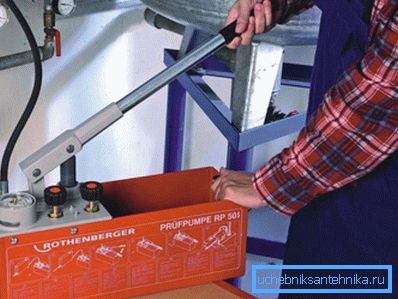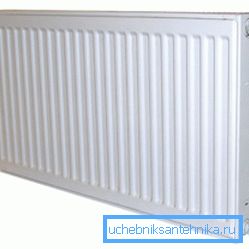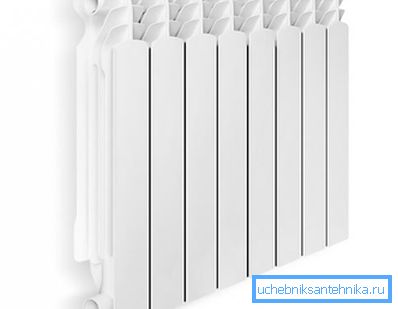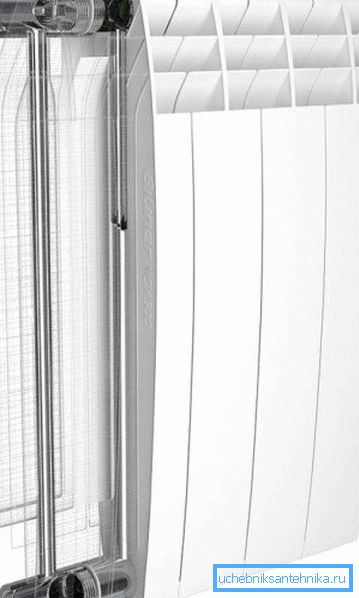What kind of water to pour into the radiator: important
Any heating system operates through the transfer of coolant, which is most often used ordinary water, as it has all the necessary characteristics. But to use plain water from the tap is not strongly recommended because it contains impurities and gases that cause the development of corrosion processes in pipelines and radiators. In this review, we will describe how to prepare the liquid and how to properly fill the heating radiator with water.

What water should be used
In order for the system to function as long as possible and to be preserved in excellent condition, it is necessary to use high-quality water, in practice this is not always the case. Consider what options are applied and what are their features.
| Tap water | This option is popular due to the fact that its price is minimal - you only pay for the amount of liquid spent, and this is a penny. But the disadvantages of such a solution are much more: the aggressiveness of the liquid and the presence of salts and oxygen in it cause corrosion of the internal surfaces and the deposition of scale on the walls, which over time leads to the formation of a stable deposit, which reduces the efficiency of heating |
| Boiled water | The preferred solution is due to the fact that when boiling oxygen is removed from the liquid, and most of the salts precipitate to the bottom. This option is powerless only against stable compounds of magnesium and calcium, but still it is preferable to use it, the only difficulty is that you have to boil a lot of water. |
| Liquid refined with reagents | In order to neutralize all the negative impurities in the composition, you can use chemical components that are sold in specialized stores. With their help, you will be able to qualitatively prepare the water, the most important thing is to strain it before pouring to remove the sediment. |
| Distilled water | Some people think that this option is the easiest to use with their own hands - just poured into the system without any preparation. In fact, sometimes it is necessary to adjust the acidity of the liquid, to check this figure, you can buy a special test at the pet store, if necessary, reduce the acidity by adding soda ash |
Note! Water needs to be boiled at least, otherwise your system after a few years will be covered with bloom from the inside and will work much worse than at the beginning.

Important process factors
To begin with, let's look at the differences between the various options of systems, each of them has its own characteristics, so it is important to know all the nuances before starting work. In addition, the process of filling the system will be considered independently.
Types of radiators
Most likely you will use one of the options described below, it is important to know its differences:
- Cast iron products are the most unpretentious, they can work with low-quality coolant, but if you do not want to get deposits, as in the photo below, it is better to use the prepared liquid. If you do not know how much water is in a cast iron radiator, then everything is simple: most often this figure is one and a half liters plus or minus 50-100 grams.

- The amount of water in a heating radiator made of steel is calculated on the basis of its width, since there are no fins in it, and it is a panel structure.. As a guideline, we take three popular models with a height of 500 mm; in products of the type 11, 2.3 liters can be placed in 1 meter, in the type 22 - 4, 54 liters and in type 33 approximately 6.84 liters. Now you need to measure the width of the structure and recalculate the result, everything is quite simple.

- Now consider how much water is in one section of an aluminum radiator, everything depends on the manufacturer of the product and the height of the elements.. In general, we can say that the range of volume of structures with a height of 500 mm varies from 250 to 480 grams. Naturally, the smaller the volume, the more economical the heating, but the demands on the quality of the heat carrier increase as well, since the products have thin channels that are very easily clogged.

- Finally, bimetallic products are the most perfect and reliable option, they are very durable and have high thermal power, one edge can produce more than 200 watts of heat. And the capacity of one section in such products is the smallest, so modifications with a height of 500 mm can hold about 200 grams of liquid.

The working process
It is often asked whether it is possible to pour water into the radiator separately - in fact, the fluid changes throughout the entire system and pumping it into each battery separately is not very reasonable.
First, you should decide under what conditions the structure will be used - if it is heated periodically in winter, you should remember at what temperature the water in the radiator freezes.
This figure is zero degrees, and if the room is colder, the liquid will simply burst pipes and radiators.
The work takes place in the following order:
- First you need to figure out how to drain the water from the radiator, for this you need to turn off the heating and wait for the temperature of the coolant to drop to room temperature. After that, the drain valve opens, located at the lowest point of the system; do not forget to open the Mayevsky valve at the highest point to stabilize the pressure in the system.

Note! It is advisable to flush the system before pouring fresh liquid, for this purpose, a special composition is taken, which is pumped by the pump and run through the system to clean it and remove plaque.
- Filling is performed as follows: the Mayevsky valve opens at the top and the water supply is turned on, this can be done using a special pump or simply pouring it into the expansion tank (for open systems). When water comes out of the valve, it must be shut off.
- At last, air from all radiators is released, and after that the work can be considered complete.

Conclusion
The use of high-quality water is the key to the durability of the heating system and its high efficiency. The video in this article will help to understand the topic even better.